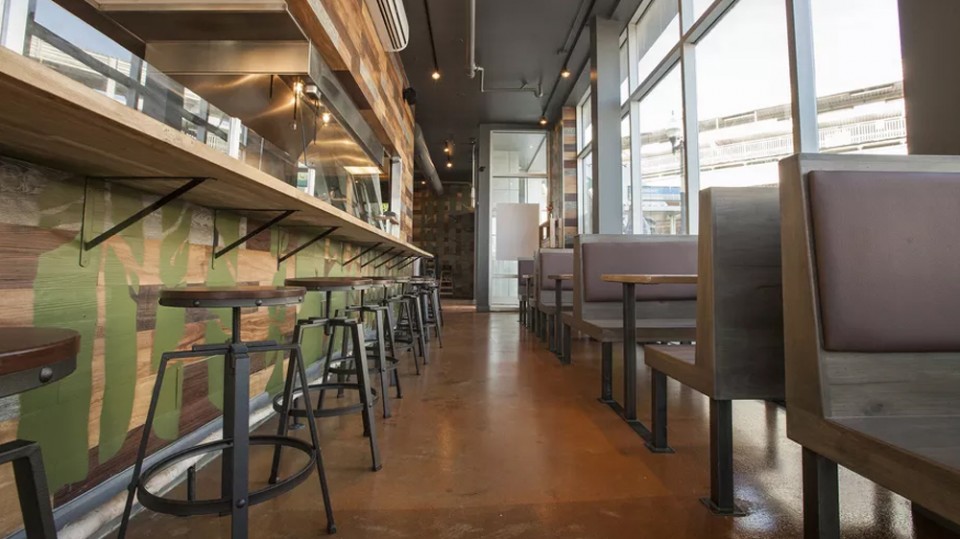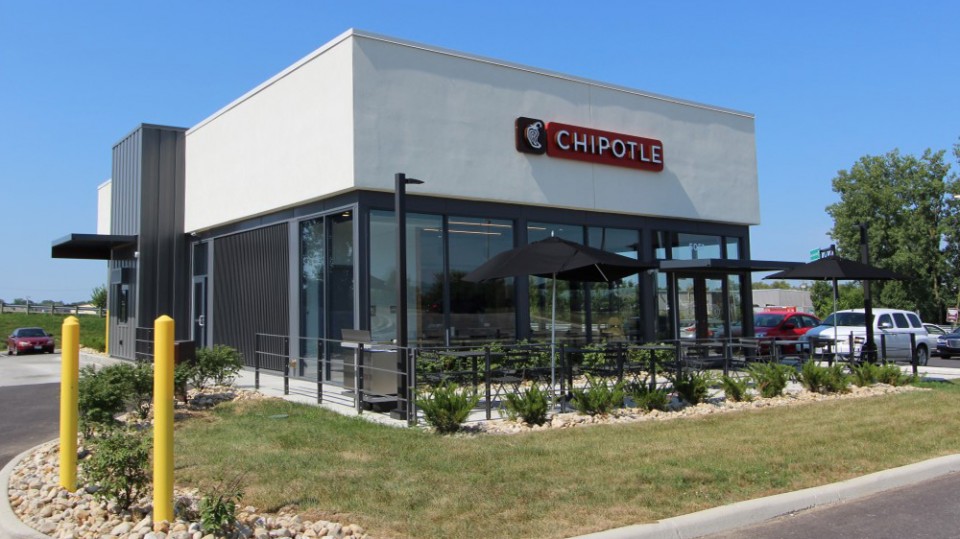
Mar 16, 2019
Crain’s Chicago Business | Ari Bendersky | March 15, 2019
Big-name chefs, independent restaurateurs and outside players are debuting spots in town over the next few months.
This is shaping up to be a stellar year for Chicago restaurants. Big-name chefs, independent restaurateurs, Japanese restaurants and more are coming for the food-obsessed to look forward to. Here we chronicle what to put on your radar.
HEAVY HITTERS
Cabra
Stephanie Izard’s Cabra will feature the chef’s take on Peruvian food. Earlier this year, she traveled to the South American country, whose cuisine has influences from Japan, China and elsewhere in the Latin world. Izard and her partners at Boka Restaurant Group will open Cabra, which means goat in Spanish, on the roof of the soon-to-open Hoxton Hotel.
Where: 200 N. Green St.
When: April 4
Cira
Filling out the Hoxton hotel, the Boka group once again teams up with chef Chris Pandel on a 200-seat, all-day Mediterranean-influenced spot on the hotel’s ground floor. The menu will feature sharable dishes, like tabbouleh comprising Italian farro verde, mojama (Spanish salt-cured tuna) and fior di mugello cheese from Italy served with a green harissa, and larger plates like hearth-roasted whole turbot with an herbaceous sauce.
Where: 200 N. Green St.
When: April 4
BomboBar
Chef Fabio Viviani and his DineAmic Group partners will open a second location of the popular Fulton Market BomboBar in Old Town. Where the original 100-square-foot spot has a small walk-up window that often garners long lines to get the popular fried Italian doughnuts, gelato and burgers, the new location will be 15 times larger, allowing Viviani to add more savory menu items. The space can accommodate 30 indoor seats and 20 spots on an outdoor patio.
Where: 1529 N. Wells St.
When: Early April
Chef’s Special Cocktail Bar
The second restaurant from the team behind Logan Square’s Giant, Chef’s Special will be a bar-first concept with quality Chinese-American fare to accompany the drinks. The cocktails will come in three categories: stirred, mixed and spritz. The food will feature noodle- and rice-based appetizers and larger plates like cold fried chicken with hot mustard and kung pao beef.
Where: 2165 N. Western Ave.
When: Summer
Gaijin
Chef Paul Virant returns to the city with a Japanese street-food restaurant. The 2,300-square-foot, 60-seat restaurant will focus on okonomiyaki, a Japanese pancake made of flour, egg and dashi and topped with ingredients like seafood and pork belly. The bar will highlight sake, Japanese whiskey and highballs and a beer collaboration with Moody Tongue.
Where: 950 W. Lake St.
When: Summer
RPM on the Water
R.J., Jerrod and Molly Melman, along with Bill and Giuliana Rancic and chef Doug Psaltis, will take over a multilevel, river-facing space to open three restaurants. An unnamed waterfront-level cafe will debut first. The others, a private event space and the main RPM restaurant, will roll out throughout the year. Each level will feature outdoor terraces.
Where: 321 N. Clark St.
When: Late spring through fall
Unnamed Hogsalt restaurant
Restaurateur Brendan Sodikoff is planning a Midwest-inspired supper club in the same alley that houses his Green Street Smoked Meats and RM Champagne Salon. The 150-seat, 9,000-square-foot restaurant with a large bar area will evoke a “woodsy lodge feeling without it being a log cabin, without being Disneyland,” Sodikoff says.
Where: 112 N. Green St.
When: Midsummer
CLICK HERE TO READ THE FULL ARTICLE

Mar 9, 2019
Eater Chicago | Daniel Gerzina & Ashok Selvam | March 4, 2019
An ongoing log of Chicago restaurant and bar shutters
March 4
HYDE PARK— Miriam’s Cafe, the food option at the Smart Museum of Art at the University of Chicago, announced it will shutter at the end of the current quarter on March 15. The museum posted that “during a recent routine health inspection—our first since the city instituted new guidelines—we were instructed that significant and highly disruptive work was needed to bring the cafe up to code and maintain operations.” Management will “explore how a re-envisioned cafe, done right and to code, might fit with a broader vision of creating a Museum lobby space that is flexible and welcoming for all.”
LINCOLN PARK— Bar and nightlife spot The Drop Lounge is done after six years at 1909 N. Lincoln Avenue. It liquidated inventory with a “grand finale” party on February 25 with $3 everything, cash preferred. Owner Arthur Knutson posted on Facebook that “we were unable to come to terms on a lease renewal. It appears the building will be moving away from having any nightlife, much like the rest of the neighborhood over the past year.” He hopes to find a new location.
LOGAN SQUARE— Langhe Market, the reconcept of Animale at 1904 N. Western Avenue, closed on February 15. The more-casual spinoff of acclaimed Logan Square Italian restaurant Osteria Langhe first opened in June 2016.
OLD TOWN— Cassava Cafe has remained closed since January’s polar vortex in what was supposed to be a temporary shutter at 1211 N. LaSalle Drive. But the cafe never reopened and there’s now a “for lease” sign on the awning above the entrance. The coffee and boba tea shop opened in 2015.
RAVENSWOOD MANOR— Steingold’s Station, the spinoff of popular new-school Jewish deli Steingold’s of Chicago, closed back in October. Owner Aaron Steingold posted in a neighborhood Facebook group that “we are simply unable to deliver the consistency and quality that we strive for, that you deserve, and that we produce on a daily basis at our flagship location” and that he “will work on finding a space closer to the Manor with an actual commercial kitchen.”
WICKER PARK— Decade-old Italian mainstay Tocco is officially done in Wicker Park. After announcing it would close in March, owner Bruno Abate held its last service at 1266 N. Milwaukee Avenue on February 2. Abate is planning to open a suburban Winnetka location soon and could open city replacement too.
CLICK HERE TO READ THE FULL ARTICLE

Mar 1, 2019
CoStar | Lou Hirsh | February 27, 2019
Eateries Turn to More Space for Cars, Less for Diners
The restaurant chain dining room is dying so fast it’s already becoming a ghost.
Quick-service restaurants such as Chipotle Mexican Grill are adding more drive-up lanes and online ordering options, transforming restaurant real estate to tap technology and customers’ growing desire to eat anywhere but a chain dining room. And independent “ghost restaurants” that make food just for delivery, with no dining rooms and little or no customer interaction, are on the rise.
The long-term effects could change the way restaurant companies or developers choose sites, locations, designs and staff. The move may even affect what it costs to build, lease and operate those eateries.
“There are many types of restaurants now that are seeing more demand for their food, but don’t have the space at their current locations to increase production of that food,” said Jerry Prendergast, principal in restaurant development consulting firm Prendergast & Associates in Los Angeles.
Fast changes are coming thanks to two mobile tech-enabled trends that are drastically altering how customers interact with restaurants. One is the rise of dedicated restaurant company apps — widely deployed by national chains such as Starbucks Coffee and McDonald’s Corp. — that let customers order and pay for food before arriving to pick them up, letting them skip waiting in line.
The number of mobile orders placed at U.S. restaurants rose 50 percent in 2017 over the prior year, according to Business Insider Intelligence, which also predicted last year that the order-ahead segment will account for 10.7 percent of all quick-service restaurant sales by 2020.
The other trend, growing even faster in terms of adoption by consumers and the restaurant industry, is the rise of third-party services — like DoorDash, GrubHub and Uber Eats — that deliver food from participating restaurants directly to homes, offices and other gathering places.
Financial services firm Morgan Stanley projected that direct delivery could account for 40 percent of annual U.S. restaurant sales or $220 billion by 2020, compared with about $30 billion annually or 5 percent of overall sales as of mid-2017.
Direct delivery is extremely convenient for customers but costly for most restaurant operators, who typically shell out 30 percent of meal tabs to those delivery companies, according to industry consulting firm Foodservice Results. Simultaneously, restaurants are challenged to establish their own direct delivery services because of labor, fuel, insurance and other rising costs.
CLICK HERE TO READ THE FULL ARTICLE

Mar 1, 2019
Robb Report | Jeremy Repanich | February 27, 2019
The first James Beard Award nominees since the foundation overhauled its voting body.
There are a lot of food awards begging for your attention and desiring to be the “Oscars of food”–like last week’s first ever World Restaurant Awards–but in America, that distinction largely falls on the James Beard Awards. And as the actual Oscars awards season has wound down, it’s time to kick food one into high gear. Today, the James Beard Foundation announced the semifinalists for its 2019 awards.
This will be the first awards since the foundation revamped its voting body to encourage a more diverse pool of nominees. Historically, the people who voted for James Beard Awards were predominantly male and white. And not coincidentally, so were many of the winners over the years. The foundation is remedying this by mandating the judging panel’s makeup would reflect the country’s diversity, using the U.S. Census as a guide.
Even before the changes to the judging went into effect, it seemed the Beard Awards were already undergoing a pretty major shift. The #metoo movement had brought forward allegations of misconduct from famed chefs and restaurateurs like John Besh, Mario Batali, and Ken Friedman. In it’s wake, the industry seemed to take a long look in the mirror about what it valued and appeared ready for new leadership. Subsequently, last year’s awards had more female winners than men for the first time and had the highest number of people of color take home medals. The change in rules will only further cement that the people who receive awards will reflect the diversity of the restaurant industry.
On March 27, the James Beard Foundation will broadcast live from Hugo’s restaurant in Houston to reveal the five finalists in each category.
CLICK HERE TO READ THE FULL ARTICLE

Feb 13, 2019
Tom Murray | Business Insider | February 4, 2019
INHOUSE is not a concierge service, says the company’s founder Benjy Leibowitz: “That’s a word we’ve banned from our vocabulary.”
While bookings are admittedly a big part of what they do, INHOUSE is a members’ club that attempts to bridge the invisible gap between industry insiders and diners who are passionate about restaurant culture.
At the moment, they’re only accepting members in New York, but they just announced $2 million in Series A funding to help them expand around the globe.
Members of INHOUSE receive priority access to some of the Big Apple’s most exclusive restaurants including Gramercy Tavern, Babbo, and The NoMad, where Leibowitz cut his teeth.
When the team behind Eleven Madison Park — currently ranked No. 4 in The World’s 50 Best Restaurants list and previous No. 1 — decided to start a second project, Leibowitz joined as Head Maître D’.
They called it The NoMad and it quickly became one of the most hyped eating destinations in the city.
CONTINUE READING





